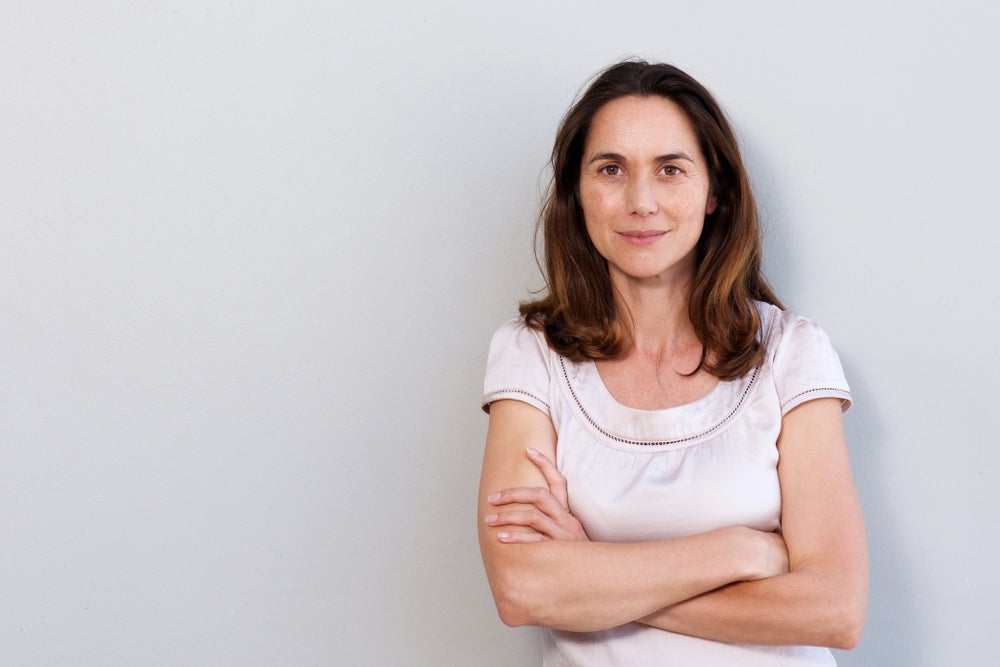Jennie’s Abdominal Hysterectomy
Abdominal Hysterectomy
Age at Surgery 46
Location: Denver/CO/USA
I was diagnosed with uterine fibroids about 3 years ago. I was given the option of UAE (Uterine Artery Embolization) or a hysterectomy (laparoscopic or abdominal), both of which would be covered by my insurance. I also looked into a research study at the Mayo Clinic, where they use ultrasound to shrink fibroids. After extensive research into all 3 of these options, I decided to do nothing, a) because my symptoms were minimal; b) both the UAE and ultrasound procedures were likely to shrink the fibroids only 40-50%, and c) fibroids are supposed to shrink that much on their own with menopause.
I was officially in menopause for almost 2 years when I woke up one morning and noticed my left inner ankle was swollen for no apparent reason. By the end of the following day, my ankle and foot were markedly larger than my right ankle/foot. I went to the ED, concerned about a blood clot, and had an ankle x-ray and ultrasound, both of which were normal. On my way out of the ED, the treating PA told me her best guess as to my diagnosis was gout.
Other than idiopathic high blood pressure, I was a healthy, physically active 45 y/o female, and I didn’t have gout. Over the course of the next 5 months, my ankle swelling daily, I wore support hose, had an MRI of my ankle (again, normal), and learned how to do lymphatic massage. Finally, a CT Scan of my abdomen/pelvis showed a large pelvic mass compressing my left iliac vein; a subsequent MRI confirmed the presence of a large uterine fibroid. It took 7 months of prodding my general practitioner to order different tests and consults before I talked to my gynecologist and my surgery was scheduled 6 weeks later.
I decided to have an abdominal hysterectomy due to the size of the fibroid – I basically concluded that something that big should not be chopped up while still in my belly and vacuumed out thru a 1-inch incision – my friend had laparoscopic surgery and her ureter was nicked and she had to have multiple subsequent surgeries, so I ruled out that option right away. I did not get a second opinion because it was pretty clear from all the imaging what was going on, and I did all of my own research and felt confident about what needed to happen.
I was surprised how calm I was going into surgery. I think it helped that I listened to a “preparing for surgery” guided meditation recommended by another HysterSister on this site, and I also had the utmost confidence in my surgeon, who had literally saved my friend’s life when her hysterectomy was botched by another doctor. During the surgery a very large subserosal pedunculated leiomyoma (a fibroid separate from, but connected to the uterus by a stalk), was found in the back left corner of my pelvis. My surgeon said the operation was “easy,” and done in 75 minutes.
I had general anesthesia, and was in the hospital for 2 nights. The first night was terrible – I was vomiting and tore some internal stitches, which was incredibly painful. Since this was my first major surgery, I didn’t know I would be nauseous from the anesthesia. I asked the nurse to remove the catheter about 24 hours post-surgery, because I had read that the sooner I could pee and pass gas, the sooner I would be allowed to go home. Nonetheless, I was grateful to stay another night, since just walking down the hall and back was very difficult.
My main concerns during my initial recovery were about whether urinating would feel normal again (it will), and how painful it was to get out of bed. Otherwise, my recovery was relatively easy; I walked some everyday, and made sure to keep on schedule with pain meds and stool softeners. My biggest worry about life after hysterectomy, I am somewhat embarrassed to admit, is the way my belly looks (“the dreaded pooch”) — it was flat prior to surgery (luckily, this is getting better, slowly, with massage). My greatest challenge during recovery was trying to figure out when/what I can do, physically, in returning to the exercise regime I had before surgery. I was released to return to my regular activities 6 weeks post- surgery, but it still doesn’t feel “safe” to do certain activities. Also, the daily massage necessary to break up the scar tissue is time consuming and pretty painful.
My health is improved now that there is all that extra room in there – not only are my bowel movements much more regular, but after the fibroid was removed, the swelling in my left leg/foot resolved. In researching my symptoms, I learned that my condition is relatively uncommon, and yet in rare cases, it can cause sudden death by PE or DVT, so all together I am definitely glad I had a hysterectomy.
My advice is to do your research – on this site and elsewhere on the web. There is so much information out there. I literally knew what my problem could be long before the doctors did – no one knows your body better than you do! Make sure you look into all the procedures and medications your doctors offer you – don’t expect docs to tell you everything, you have to ask. I work in healthcare and am a doc myself (tho not a medical doc), so I know this to be true. For example, I was given the choice between the Estring or an estrogen cream for menopause symptoms, and was told they were equally good options; a simple internet search told me that they are not exactly the same, because creams release a much higher concentration of hormones.
Review your options with friends/family and listen to the questions they ask you – don’t just agree to something because that is what the doctor recommends, sometimes they are just working from a protocol and prescribing what works for MOST people.







